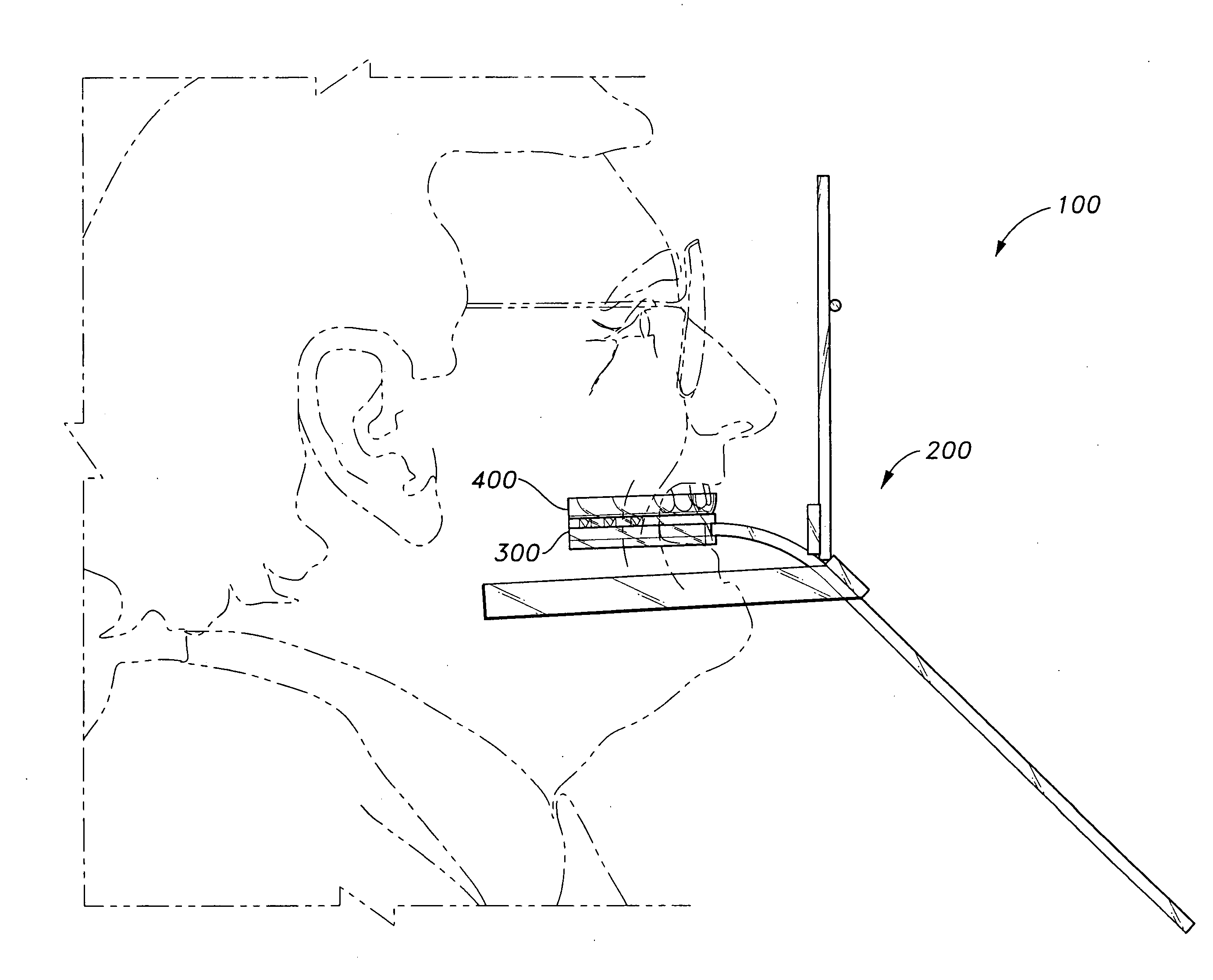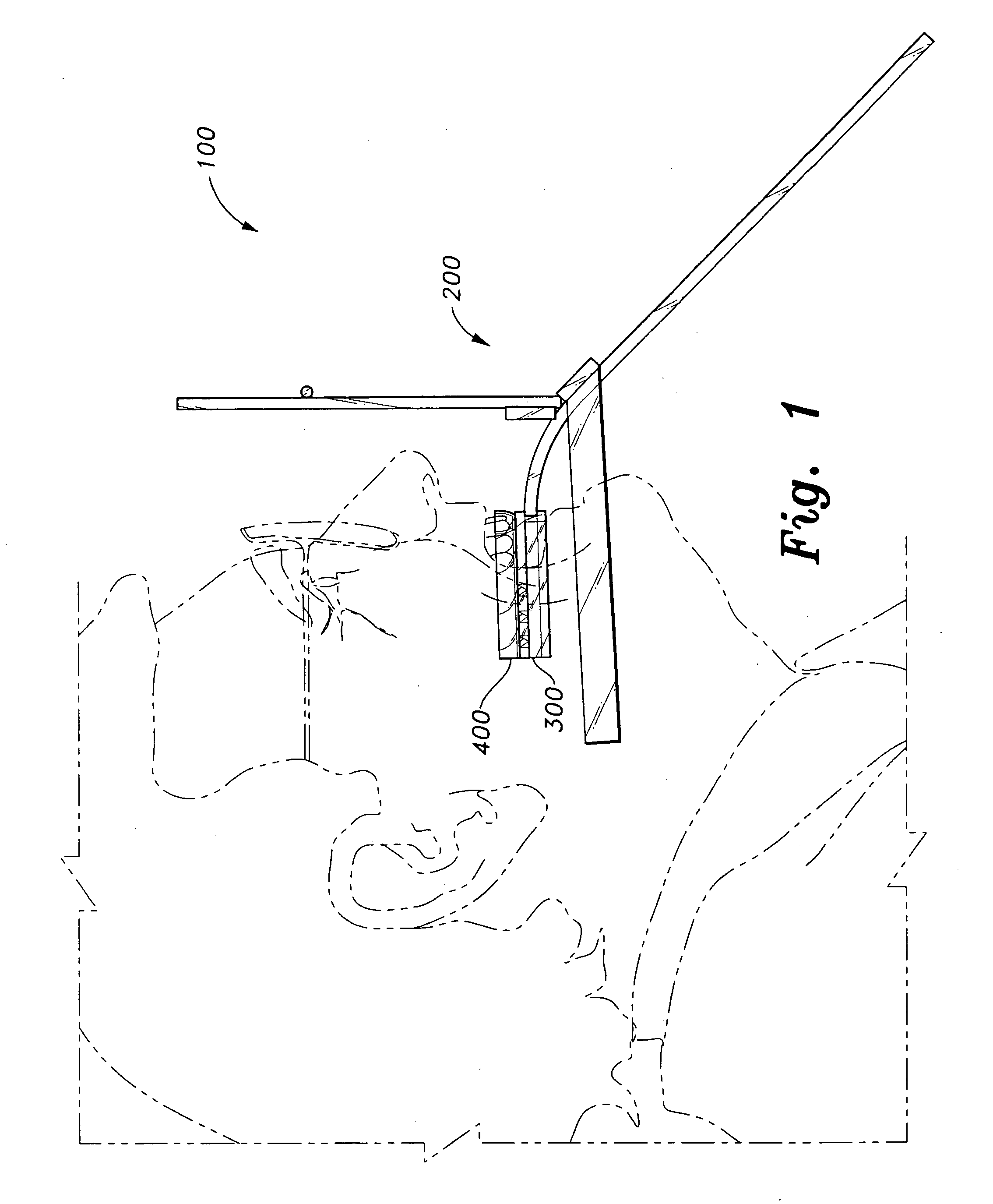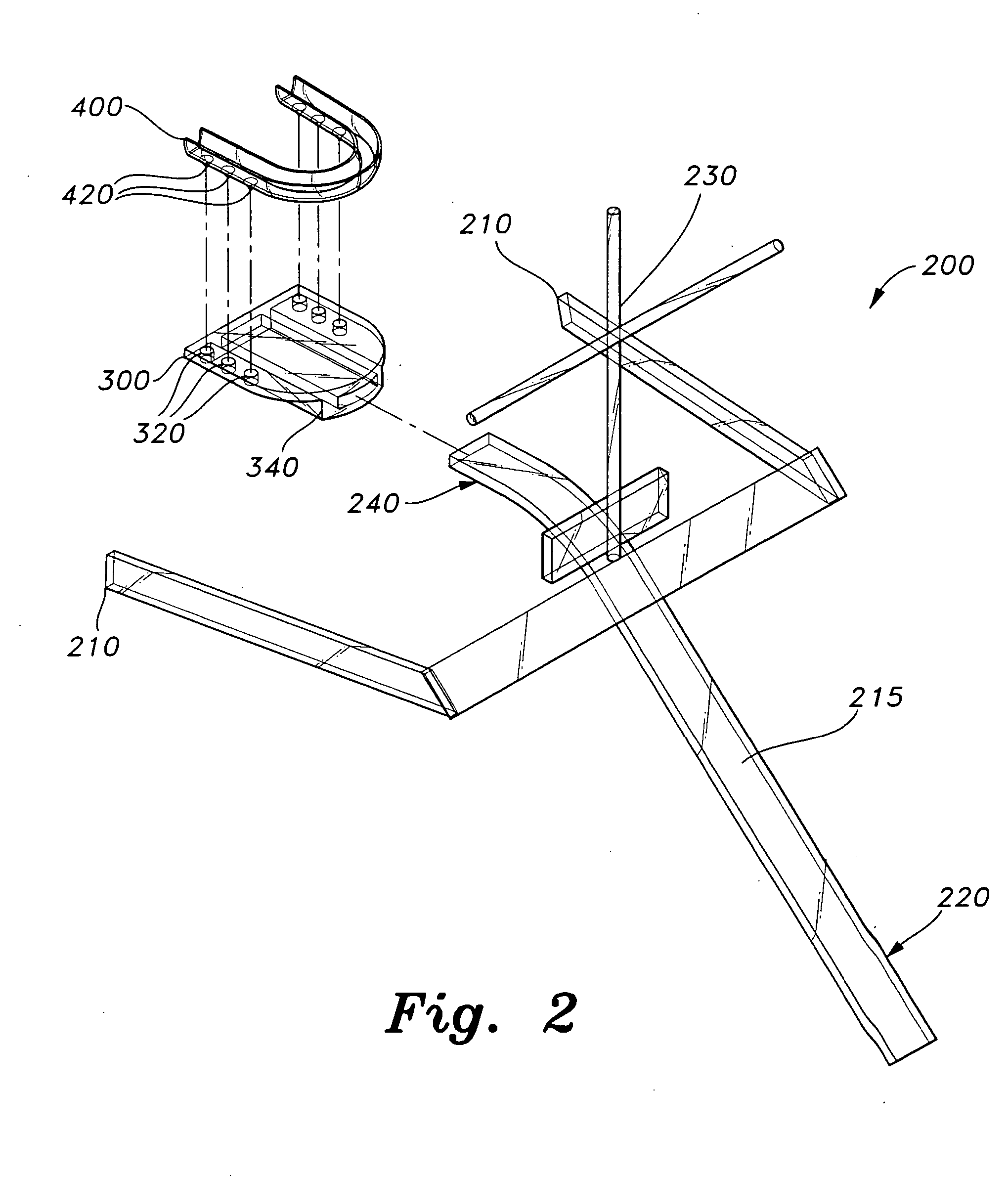Dental splints and apparatus and method for making dental splints
a dental splint and apparatus technology, applied in the field of dental devices, can solve the problems of large error room, only restraining invasive measures, and relieving the severity of the patient's condition, so as to relieve pain and discomfort for patients, and the effect of reducing pain
- Summary
- Abstract
- Description
- Claims
- Application Information
AI Technical Summary
Benefits of technology
Problems solved by technology
Method used
Image
Examples
Embodiment Construction
[0022] The present invention is a pair of dental splints for treating temperomandibular joint disorder and similar conditions involving the relation of the maxilla and mandible, together with an apparatus and method for making dental splints that permits fabricating the splints in the dental practitioner's office instead of a dental laboratory. The structure of the splints will become clear by explaining the apparatus and method of making the splints.
[0023] Referring to FIGS. 1, 2 and 3, the apparatus is designated generally as 100 in the drawings. The apparatus 100 includes a maxillary plane analyzer 200, a holding plate 300 and a maxillary stent 400. The holding plate 300 removably holds the stent 400. The dentist uses the analyzer 200 to determine the patient's occlusal plane and orient the stent 400 in the proper angle on the patient's maxilla.
[0024] The analyzer 200 is a support and manipulating body having a handle or lever 215, a cruciform upright 230, and a U-shaped base h...
PUM
 Login to View More
Login to View More Abstract
Description
Claims
Application Information
 Login to View More
Login to View More - R&D
- Intellectual Property
- Life Sciences
- Materials
- Tech Scout
- Unparalleled Data Quality
- Higher Quality Content
- 60% Fewer Hallucinations
Browse by: Latest US Patents, China's latest patents, Technical Efficacy Thesaurus, Application Domain, Technology Topic, Popular Technical Reports.
© 2025 PatSnap. All rights reserved.Legal|Privacy policy|Modern Slavery Act Transparency Statement|Sitemap|About US| Contact US: help@patsnap.com



